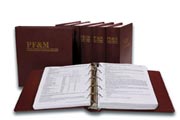 |
 |
 |
|
PF&M at a Glance Ocean marine insurance The beginning of ocean marine coverage is the beginning of insurance. Traders discovered that placing all of their goods on a single vessel meant that everything could be lost if the vessel overturned or was taken captive. They found that transporting their goods via several ships reduced their likelihood of experiencing a total loss. This simple concept of spreading the risk is the basis for all property and casualty insurance. Formal insurance contracts protecting cargoes and hulls were the first to be developed since the risks were so great. Coverage has expanded as significant losses occurred and underwriters were able to establish a rate for accepting a risk. Ocean marine insurance is divided into three parts: Ocean Marine Hull Coverage: This provides the physical damage coverage for the vessel and property that is a part of that vessel. In addition to ocean-going vessels, Hull coverage is written on many different kinds of commercial craft that operate in rivers, harbors and other inland waterways. Such vessels include: tugs, lighters, various types of work vessels used to load or unload ships, river towboats, barges and miscellaneous classes of floating equipment used in and around coastal or inland ports. Offshore oil rigs and similar type fixed property in the ocean are also eligible for hull insurance. Ocean Marine Cargo Coverage: This provides coverage for the physical damage to the cargo on the vessel. All goods that are waterborne during any part of their shipment may be insured under an ocean marine cargo policy—even when the cargo is on dry land. The most common cargo policy is the Open Cargo policy, which covers all shipments made by the insured continuously until canceled by the insurance company or the insured. Ocean Marine Liability Coverage: This is called P&I or Protection and Indemnity coverage. It covers bodily injury and property damage to the general public and to the master and crew. This also covers the legal liability for the cargo of others being carried. Pollution exclusion clauses may be attached to the basic policy, depending on the P&I Society writing the coverage and their analysis of the loss potential. Lloyd’s of London is one of the largest writers of ocean marine coverage, and because insurance for ocean-going vessels is heavily reinsured and Lloyd’s is a primary provider of reinsurance, it’s highly probable that Lloyd’s is involved in most contracts protecting ocean-going vessels. In the United States, the American Institute of Marine Underwriters plays a major role in the ocean marine market. The organization reviews coverage clauses and also addresses important issues. In addition, it sponsors forums where its members meet and discuss industry concerns. This group is not involved in developing rates. However, it is an important research source.
The Classification Societies are unique to ocean marine. They are the loss prevention arm of the industry. Their sole job is to determine the seaworthiness of a vessel. Since this is a marine engineering type service, exacting standards must be met, and non-compliance will result in a change in classification. There are a number of societies, and those societies are monitored by the United States Coast Guard to determine which are most accurate in setting seaworthiness. An important warranty in the hull coverage is that the vessel cannot change classification. If a society changes a vessel’s classification, the underwriter must be notified and allowed to decide whether or not to continue providing coverage. If the underwriter is not notified, coverage can be voided. Another important group in the ocean marine industry is the surveyors. Just as the classification societies are the loss control part of the industry, the surveyors are the claims side. They are independent firms that review damage and make recommendations to the insurance company. Because they are independent firms, actions can be taken only when the insurance carrier approves the recommendations. Ocean marine is a highly specialized line of coverage. A number of excellent brokers work with agents to provide placement service. Please refer to The Insurance Marketplace for the most current listing of brokers available for marine cargo, marine hull, and P&I. Please note that this is only an overview of this subject. A thorough discussion may be found in PF&M Analysis from Rough Notes. * |
|
|||||||||||||
| ||||||||||||||
